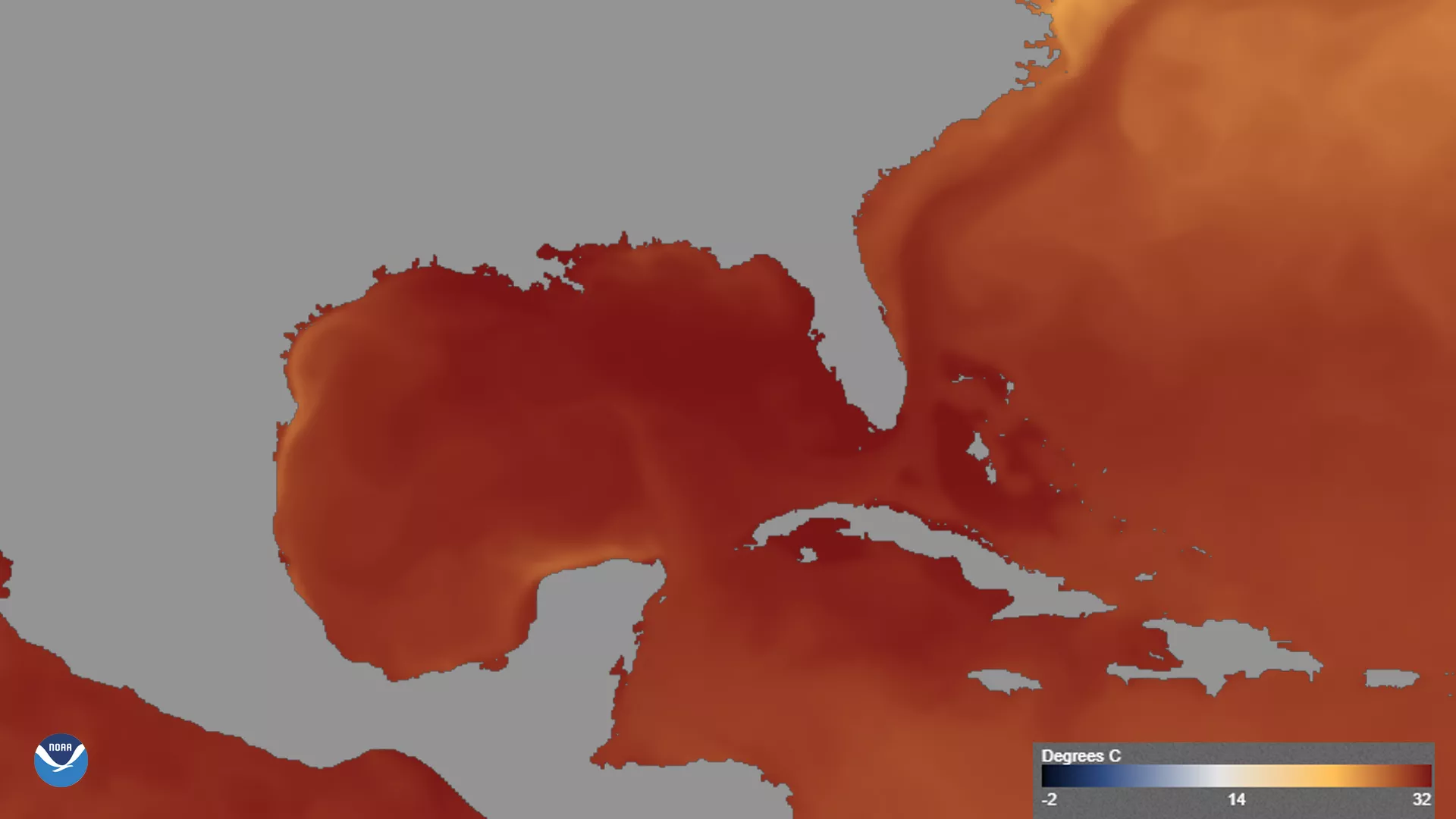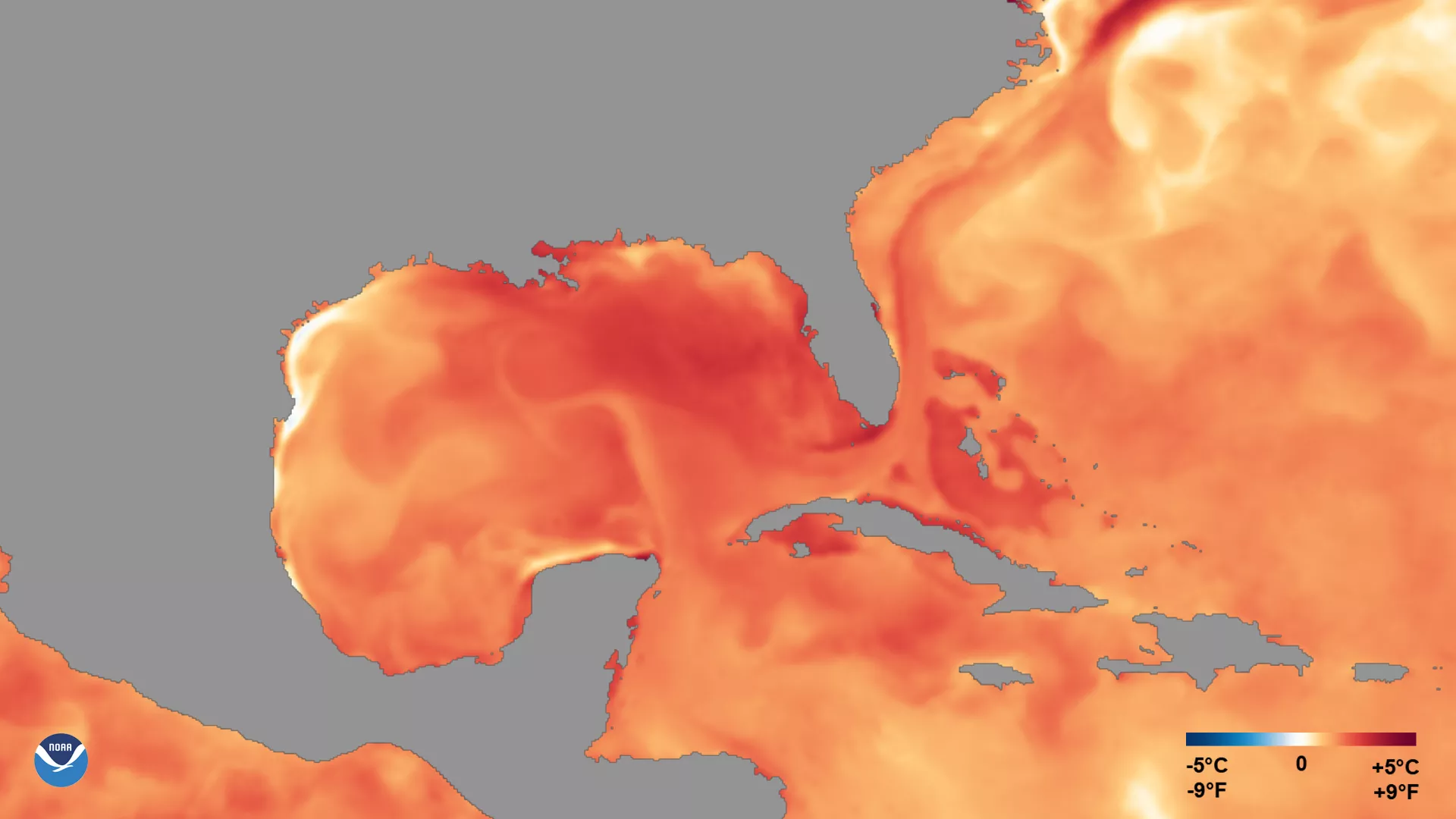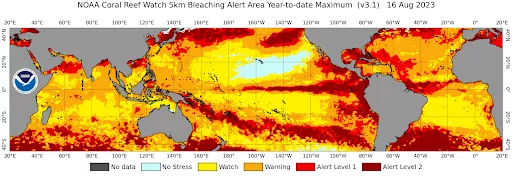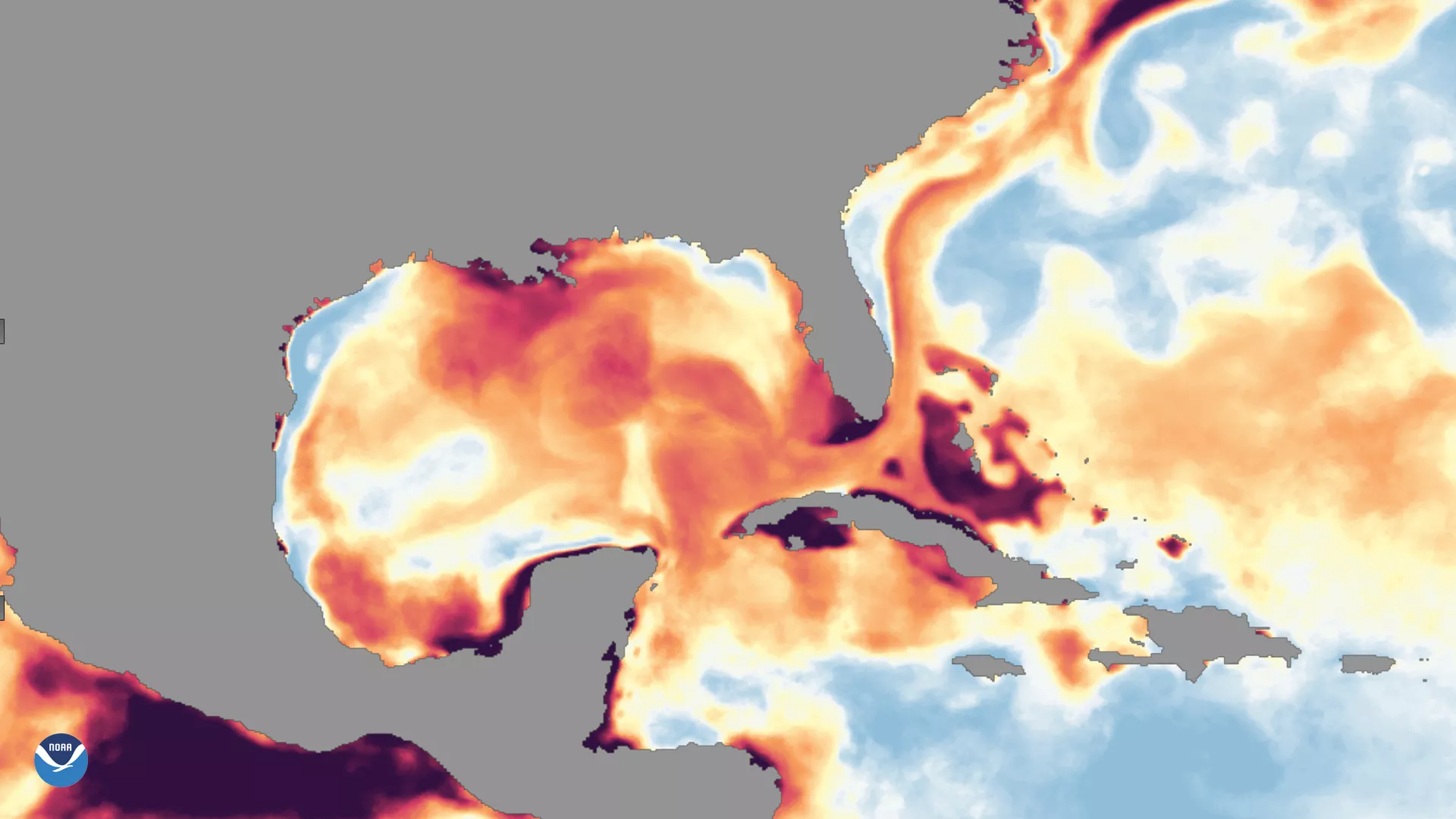Since April 2023, NOAA has been monitoring a steady rise in ocean temperatures, which is resulting in unprecedented heat stress conditions in the Caribbean basin, including waters surrounding Florida and the Gulf of Mexico. On Thursday, August 17, 2023, NOAA scientists provided a briefing on how these record-breaking warm ocean temperatures have stressed, bleached, and in some cases, killed corals within the 3,800 square miles of the Florida Keys National Marine Sanctuary.
Coral reefs are often referred to as the "rainforests of the sea," due to their incredible biodiversity and ecological importance. They provide vital benefits as part of marine ecosystems by sustaining habitats for marine life, buffering the harmful impacts of storms on coastal communities, and supporting local economies through tourism and fishing.
According to the briefing, a large-scale heat stress and coral bleaching event is underway, impacting two ocean basins and multiple countries. Five countries in the Eastern Tropical Pacific have confirmed coral bleaching, including Mexico, El Salvador, Costa Rica, Panama, and Columbia. Seven countries/territories/states in the Atlantic have confirmed bleaching as well, including Florida, Puerto Rico, the U.S. Virgin Islands, Mexico (both sides of the Yucatan), Panama, Belize, and Cuba.
Throughout the Caribbean and Atlantic, sea surface temperatures are as high or higher than ever before in satellite records, and heat stress has developed five to six weeks earlier than ever seen in the record.
Essentially, corals around Florida are experiencing extreme levels of heat stress that have never been recorded before. All of the Florida Keys are at Alert Level 2 for bleaching conditions, which means severe, widespread bleaching and significant mortality are likely. Some sites have already been exposed to two times greater the amount of heat stress than when mortality is expected to begin, and so far, the most extreme heat stress is in the lower and middle Florida Keys.
NOAA’s current modeled Outlook predicts that a Caribbean-wide mass bleaching event may begin in a matter of days to weeks, and Alert Level 2 conditions are predicted for the majority of Caribbean coral reef sites by the end of September.
NOAA scientists and partners are employing various methods to restore Florida’s Coral Reef, but it’s a race against time. They are assessing how different genotypes (genetic individuals) of coral tolerate different environmental conditions; developing ways to naturally prepare corals for stress in the wild; and are working to automate certain processes to increase efficiency and decrease costs.
In July, ocean temperatures near Florida crossed into the triple digits. A sensor in Manatee Bay near Everglades National Park recorded 101.1 degrees Fahrenheit at 6 p.m. after a morning low of 91 degrees. For comparison, the average hot tub temperature is 100 to 102 degrees. Other readings included a buoy near Johnson Key that reached 98.4 degrees while others in the area reached or surpassed 95 degrees during the day. In these cases, the water temperatures were even higher than air temperatures.
Dr. Derek Manzello, who coordinates NOAA’s Coral Reef Watch Program, pointed out that the “hot tub” temperatures are from locations where corals have never lived. “In other words, these environments have always been inhospitable for corals, even before climate change,” he explained. Despite this, he said the highest recorded temperature that he has seen from a coral reef site was 93.2 degrees at Sombrero Reef, which is still very warm.
Meteorologist Jeff Masters tweeted that official sea surface temperature records are not kept, but a study published in 2020 proposed that the highest sea surface temperature reliably observed may have been 99.7 degrees in Kuwait Bay, within the Persian Gulf on July 30, 2020.
Marine heatwaves can last for weeks, months, or years, and by definition, are usually defined as any time the ocean temperature is above the 90th percentile for a specific length of time, which can vary depending on whether you are looking at daily or monthly data. Observations and measurements of marine heatwaves are made by the National Weather Service’s National Data Buoy Center, which gathers data from 1,300 weather observing stations. Additionally, global ocean surface temperatures are monitored daily using a blend of geostationary and polar-orbiting satellite measurements.
In addition to the tropics, other isolated marine heatwave conditions have been detected off the Northeastern U.S. coast, along the path of the Gulf Stream. NOAA also has been monitoring a large marine heatwave in the Northeast Pacific, in the Gulf of Alaska, that has been sitting offshore since late 2022.
NOAA’s Joint Polar Satellite System (JPSS) consists of polar-orbiting environmental satellites that circle Earth from pole to pole 14 times daily—providing full global coverage twice a day. They collect a variety of environmental data, including water temperature and color, which is used in many applications including monitoring of climate variability, operational weather and seasonal forecasting, military and defense operations, ocean and atmospheric models, ecosystem assessment, tourism, and fisheries. Some examples of data collected are shown below.
The image below shows sea surface temperatures from Aug. 7 to 13, 2023, with areas of darker red signifying higher temperatures. While the key is in Celcius, the darkest red temperatures are around 90 degrees Fahrenheit.

Satellite data can also help us visualize the difference in ocean temperatures compared to historical baseline measurements. Thus, areas with abnormally warmer or cooler temperatures can be identified. In the visualization below, historically normal temperatures would be white. Unusually warmer areas are shown as increasingly darker shades of red, and unusually cooler temperatures would be shown as increasingly darker shades of blue, respectively. You can see that areas around Florida in the Gulf of Mexico and in the Caribbean are redder, and thus higher than normal.

In addition to marine heatwaves, this type of data is also useful for identifying the onset of El Niño and La Niña cycles, the approach of potential coral bleaching heat stress, cooling effects of weather events such as tropical storms, etc.
We also use NOAA data to visualize accumulated heat stress, a major factor that can lead to coral bleaching. Shown here is the year-to-date Bleaching Alert Area product from NOAA Coral Reef Watch, which shows the maximum bleaching alert levels experienced around the world since the start of 2023. Areas with high heat stress, shown as dark reddish and brown areas on the map below, can cause severe coral bleaching and death.

If we take a closer look at Florida and the Caribbean below, we can see areas where corals have been exposed to the highest accumulated heat stress (dark red) from Aug. 7 to Aug. 13, 2023.

The alarming rise in extreme ocean temperatures is pushing coral reefs to the brink of collapse. NOAA and our global partners will continue to monitor the situation and work to promote global solutions and efforts to protect our reefs. The fate of coral reefs is intertwined with the health of our planet, and by taking collective action, we must strive to ensure a sustainable future for these vital and breathtaking marine wonders.
- Learn more about the ongoing marine heat waves in U.S. waters.
- Read a Q&A with NOAA Coral Reef Watch Director, Derek Manzello, about how rising ocean temperatures are raising new concerns for coral reefs.
- Learn how NOAA and partners are racing to rescue remaining Florida corals from historic ocean heatwaves.
- Learn about the Cheeca Rocks reef, within the Florida Keys National Marine Sanctuary, which is completely bleached.
- Read more about how NOAA is partnering with Mission: Iconic Reefs to relocate thousands of corals amidst the record heatwave.
